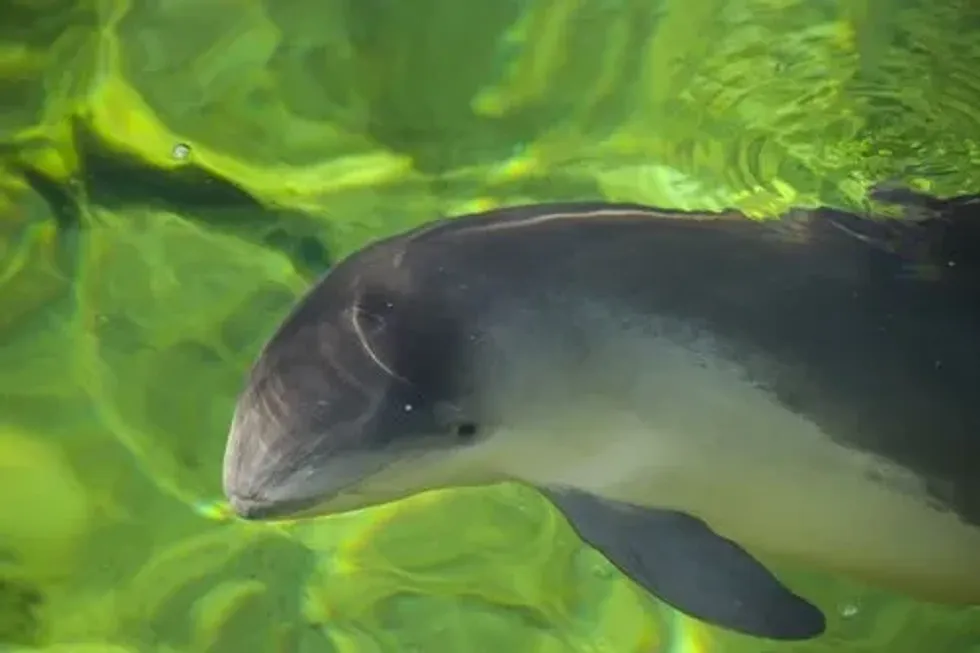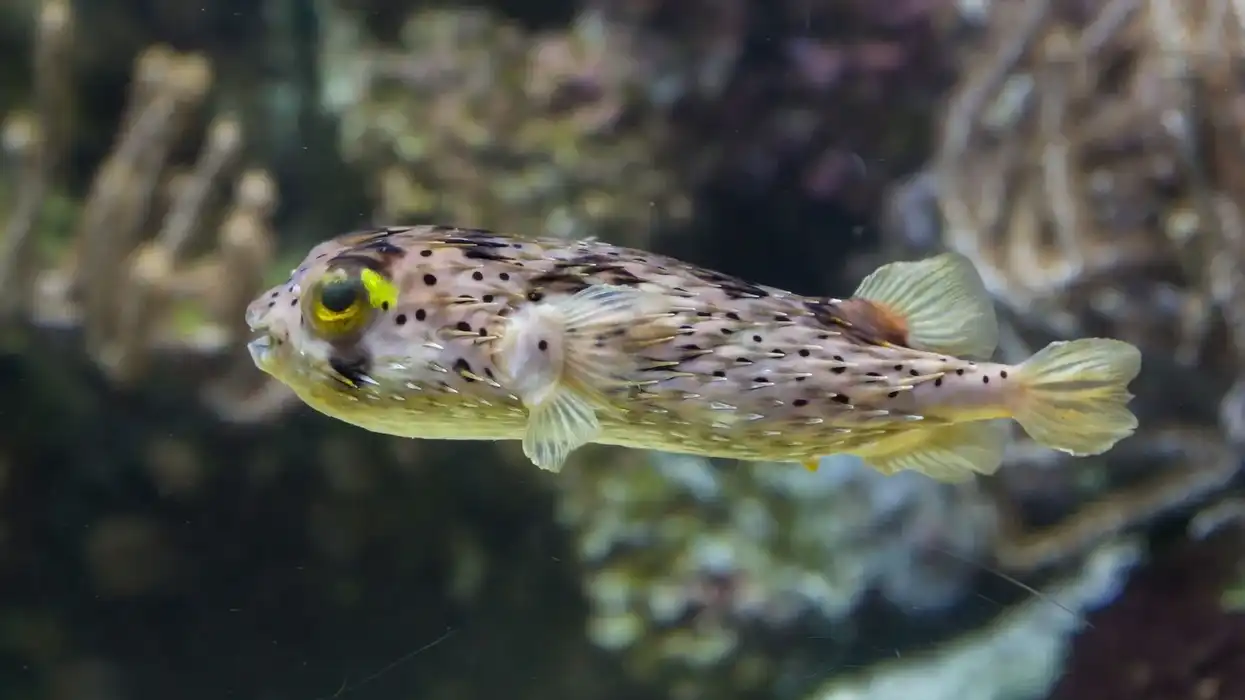Porpoises are an aquatic species of animal that are classified under the family phocoenidae, parvorder animal order (toothed whales). However, they are a lot more closely associated with narwhals and belugas than with dolphins.
There are seven species of dolphins; all belong to the littlest of the toothed whales. Porpoises are often differentiated from dolphins by their two-dimensional, spade-shaped teeth, which differs in comparison to the round shape teeth of dolphins.
Porpoises, and alternative cetaceans, belong to the biological group cetartiodactyla with artiodactylous ungulates, and their nearest living relatives are the hippopotamuses, who diverged from them forty million years ago. Porpoises have two flippers in the front and a dorsal fin.
Porpoises are plenteous and located in a very multitude of environments including rivers (finless porpoises), open ocean (Dall's porpoise and spectacled porpoise), coastal waters, and shelf waters (harbor porpoise, vaquita). They also cover all water temperatures from tropical (sea of Cortes, vaquita), to polar (Greenland, harbor porpoise).
Finless porpoises possess no dorsal fin, hence their name. Harbor porpoises have a triangular dorsal fin.
Hunting of porpoises and by-catch by fishing nets is a major downside for this species. Accidental by-catch in fishing nets kills nearly 300,000 whales, dolphins, and porpoises per annum. Porpoises are mammals, and therefore once they become stuck in fishing nets they tend to drown quite quickly..
If you liked reading about porpoise facts, you can also read facts on leopard seal or Amazon river dolphin.
Porpoise Interesting Facts
What type of animal is a porpoise?
Porpoises are a group of aquatic mammals that are similar to dolphins.
What class of animal does a porpoise belong to?
Porpoises belong to the class of mammals.
How many porpoises are there in the world?
The specific number for a population of these animals is unknown, but the harbor porpoise has a population of at least 700,000 across the globe.
Where does a porpoise live?
Porpoises live in the northern temperate coastal region, subarctic and arctic coastal water, and offshore waters. They can be commonly found in bays, estuaries, harbors, and fjords.
What is a porpoise's habitat?
Porpoise habitat is common in bays, estuaries, sea harbors, and fjords. Porpoises are found throughout the temperate sea coasts of the Northern Hemisphere. They prefer shallow waters and are commonly seen in sea harbors and bays. They are also known to frequent inland water, including rivers, estuaries, and tidal channels.
Who do porpoises live with?
Most porpoise species live in groups called shoals as porpoises are social animals. The porpoise population of a shoal can range from two to a few hundred.
How long does a porpoise live?
The life span of porpoises is around eight to ten years.
How do they reproduce?
The average gestation period is about ten to 11 months. Once every one to three years, most female porpoises will reproduce. After birth, the child is nursed by its mother and fed milk until it is capable of preying and consuming solid foods.
What is their conservation status?
The conservation status of porpoises ranges from Least Concern to Vulnerable depending upon the specific species. Some after even classified as Near Threatened. Harbor porpoises can be found in thousands, while the count of vaquita is only 100.
Porpoise Fun Facts
What do porpoises look like?
Porpoises have a bulbous head, no external ear flaps, a stiff jaw, a torpedo-shaped torso, flipper-like limbs, and a tail fin. Their skulls have small eye orbits, short, blunt snouts, and eyes on the sides of their heads.
They have conical teeth, long beaks, and small mouths. Their mouths are much smaller compared to dolphins. Their dorsal fins are also triangular, which is peculiar and super cute.
Porpoises and dolphins are also members of the biological order cetacea, but they are two distinct species. Their bodies are both streamlined, and their flippers are huge. Both are intelligent beings with a 'melon', which is a device in the forehead that produces sound waves to help them navigate their aquatic habitats.
Porpoises and dolphins vary in many respects. Porpoises, unlike dolphins, do not have elongated beaks. Dolphins have curved or hook-shaped dorsal fins, while porpoises have triangular fins. Finless porpoises are an exception. They have no fins at all. The teeth of dolphins are cone-shaped, while those of porpoises are spade-shaped.

How cute are they?
Common porpoise might or might not be considered cute depending on the person, but some small porpoises are especially cute.
How do they communicate?
Porpoises, like all whale species with teeth (odontocetes), use sound for communication and echolocation. Porpoises use echolocation to see with sound. It helps them in navigating their surroundings to locate objects and prey. Porpoises also use high-frequency whistles for communication.
How big is a porpoise?
A common Porpoise weighs around 119-490 lb (54-220 kg) and are 55-90 in (140-230 cm) long. Porpoises can be as big as any human.
How fast can a porpoise swim?
A porpoise can swim at speeds ranging from 1.1-9.3 mph (1.7-14.9 kmph).
How much does a porpoise weigh?
A common porpoise weighs around 119-490 lb (54-220 kg), and female porpoises tend to weigh more than their male counterparts.
What are the male and female names of the species?
There are no specific male and female names for porpoises.
What would you call a baby porpoise?
The youngest member of the porpoise family is called a calf.
What do they eat?
Porpoise diet mainly consists of schooling fish, herring, and mackerel. Occasionally, they will eat squid and octopus. Their diet also consists of benthic fish and pelagic fish.
Are they dangerous?
No, they are not dangerous, moreover they are shy around humans. Porpoises are very similar to dolphins in behavior, but even smaller, therefore they aren't dangerous at all.
Would they make a good pet?
They might make a good pet as they are very similar to dolphins, but porpoises are very shy of humans which might be a negative. They are very intelligent. Porpoises are smaller than dolphins, especially vaquita porpoises, which are very small and really cute.
Did you know...
The number of porpoises in Australia is just one. A cross between dolphins and porpoises is possible, meaning these different species can mate.
Dolphin attacks on porpoises accounts for one death a year on average. The reason for these attacks is unclear, but it is a known fact that dolphins kill (but do not eat) porpoises. Cape Porpoise, Maine is a small coastal village in the town of Kennebunkport, Maine, United States.
Porpoise vs dolphin
Many people mistake a porpoise for a dolphin and the other way around. Both species are terribly similar and share several common characteristics. However, there are variations between the two.
Dolphins and porpoises belong to the identical scientific order, cetacea, which includes all whales. In comparison to dolphins, porpoises are quite small. Dolphins have a lean sleek body, whereas porpoises usually seem stout or chubby.
The main difference between dolphins and porpoises is: porpoises have little, rounded heads and blunt jaws rather than beaks, whereas dolphins have a spherical, bulbous 'melon', and porpoises don't. Their teeth are spade-shaped, whereas dolphins have round shape teeth. Additionally, a porpoise’s fin is usually triangular, instead of curving like that of the many dolphins and huge whales.
Porpoises seldom approach people or boats. The dolphin, on the opposite hand, is commonly seen riding the wave of fishing boats, porpoises rarely surface unless they're arising for a breath.
Different types of porpoises
The porpoise family has seven porpoise species. Harbour porpoises live in the coastal region of the sub-Arctic and predominantly, cool temperate waters of the North Pacific and the North Atlantic.
Vaquita only live in a small area in the north of the Gulf of California (Sea of Cortez) and are Critically Endangered.
Burmeister’s porpoises are native to South America, and can be found from north Peru’s Pacific coast to southern Brazil’s Atlantic coast. Spectacled porpoises are most often seen around the south-eastern coast of South America.
Indo-Pacific finless porpoises are found from the southern East China Sea west to the Indo-Malay region and on through the Indian Ocean to the Persian Gulf.
Narrow-ridged finless porpoises prefer shallow, coastal waters and can be found from the Taiwan Strait north into the Yellow Sea and into southern Japan. Dall’s porpoises live in the North Pacific Ocean and adjacent seas from southern California and southern Japan up to Alaska.
Here at Kidadl, we have carefully created lots of interesting family-friendly animal facts for everyone to discover! Learn more about some other mammals including harbor porpoise, or West Indian manatee.
You can even occupy yourself at home by drawing one of our porpoise coloring pages.










